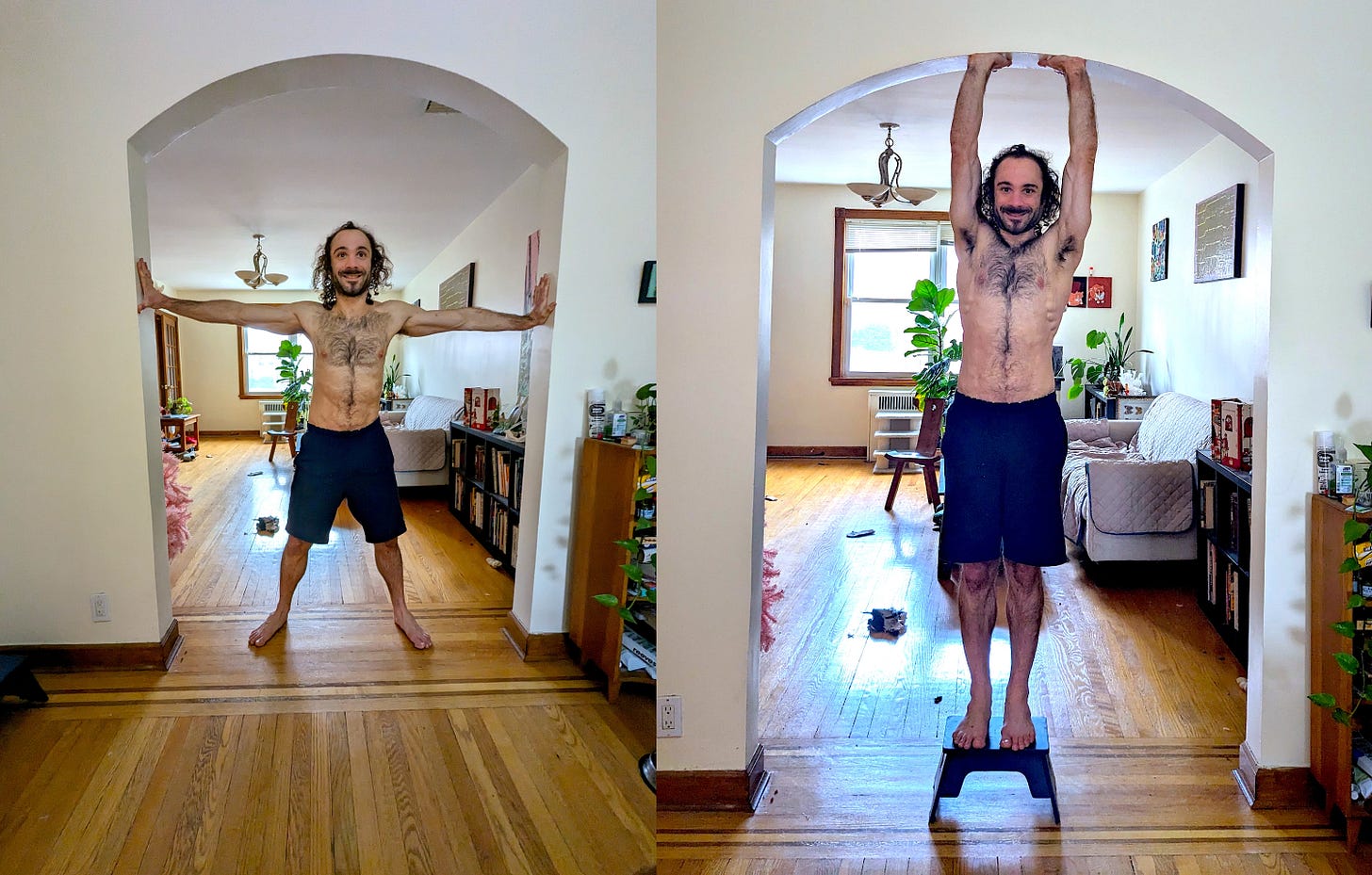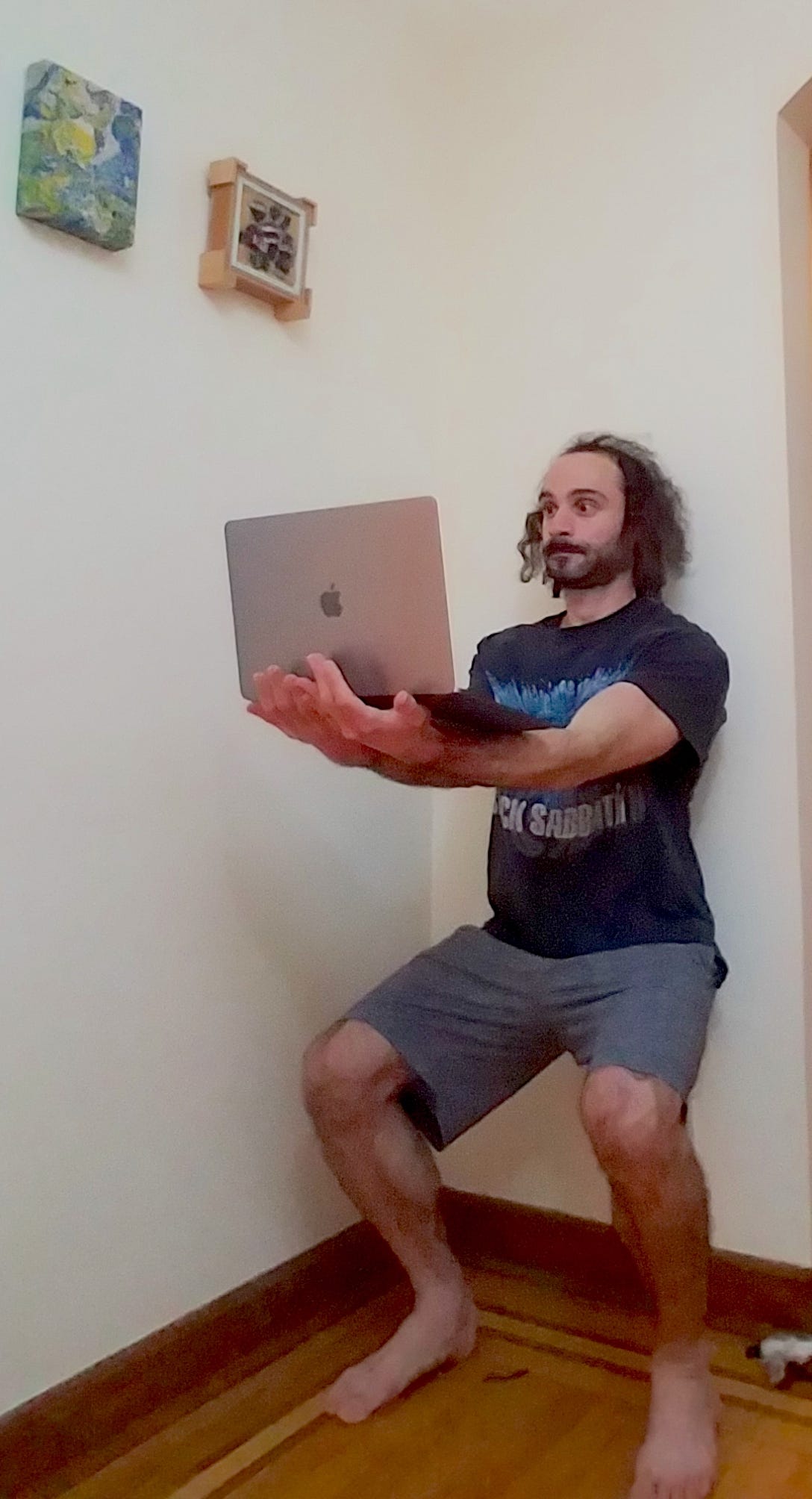Static Strength Training
Unleash the Power of Bruce Lee's Dragon Force with Isometric Exercises
Have you ever tried to push a tree, house or any other massively heavy and static object with just your bodyweight? Well, chances are you didn’t succeed in actually displacing said object; which is good because I certainly don’t condone harming trees. But what you did accomplish (if you sustained your attempt for several physically grueling seconds), is a feat of strength training that puts you in good company with the likes of the late martial artist and actor Bruce Lee.
The act of pushing an immovable object is a type of isometric exercise. We generally associate strength and muscle growth based on the number of repetitions we do. Curling a dumbbell, swinging a kettlebell and performing pull ups and chin ups utilize very blatant muscle contractions, which is the tightening, shortening and/or lengthening of muscles. With isometric exercises, we are still tightening a specific muscle or group of muscles, although the muscle contracts, there’s no visible movement in the angle of the impacted joint. The point is to generate an ample amount of force while the muscle length remains constant. Instead of reps, we measure isometrics by time. Typically, six to twelve seconds per set is enough when maximum force is applied.
Bruce Lee was a proponent of creating and holding tension in various parts of the body through a process called overcoming isometrics. Simply put, this means pushing or pulling your body against a static object (see: Sinicki, 2021). In his book The Art of Expressing the Human Body (published posthumously in 1998), Lee provides examples of the isometric exercises that were central to his training. For his routine, Lee used a bar that was chained to the floor, which made it impossible to move and to curl.
In lieu of Lee’s customized bar, you can use very strong/taut bands, rope or even a towel. Alternatively, you can forgo those aforementioned materials and just use the environment around you. A doorway and the walls and ceilings of your home, a very large and stable tree out in the yard or park, a cement bench or barrier around the city, are all good choices for overcoming isometric training.
Another form of isometrics is known as yielding isometrics. This means holding a contraction in a specific position and resisting the urge to move for a period of time. Planks, squat holds and wall sits are examples of yielding isometric exercises. Each is typically performed for a duration of thirty seconds to a minute.
Because isometrics can be performed in a timely manner and done practically anywhere, they are a great way to transition from being sedentary into action. If I am sitting doing computer work for a while, it’s really convenient for me to get up and walk two feet over to the archway between rooms and perform a few sets of isometric exercises. These exercises include the side press, where I stand in the archway with my arms at shoulder height and press hard against each side of the frame; and the arm press, where I stand straight and press upward against the top of the frame. These exercises are performed for twelve seconds, and each for five sets.

If you stare at a screen for the bulk of your day, why not incorporate some isometrics to make screen time a physically challenging experience? As you’re scrolling through Substack, you might consider doing wall sit as you read some of the latest enthralling content.

Flexing can also be an isometric exercise. More than just an aesthetic expression to show off the fruits of our strength training labor, flexing creates tension in our joints and muscles. This is due to the very simple fact that muscles are strengthened when they contract. Holding a muscle contraction for a short, but intense period of time, can strengthen and enhance our muscles, mobility and posture, and even help to reduce hypertension (see: Sayer, 2023).
During my isometric workouts, I add in a few different flexes in between the main exercises, holding each one for twelve seconds.
Isometrics are an ideal element of a well balanced workout. A total body burn is experienced when they are incorporated with cardio, flexibility and strength training. I also happen to find isometric exercises to be some of the most artistic looking workouts. It’s a fitness tableaux vivant. The way our bodies pose in a moment of pure physical exertion, while remaining largely static, is akin to a painting or sculpture. It's a true artful exercise.
References, Notes, Suggested Reading:
Sayer, Amber. “Does Flexing Build Muscle? 5 Benefits Of Tensing Your Muscles,” Marathon Handbook, 23 November 2023. https://marathonhandbook.com/does-flexing-build-muscle/
Sinicki, Adam. “Bruce Lee’s Overcoming Isometric Training Routine Explained,” The Bioneer, 21 October 2021. https://www.thebioneer.com/bruce-lee-overcoming-isometrics/





